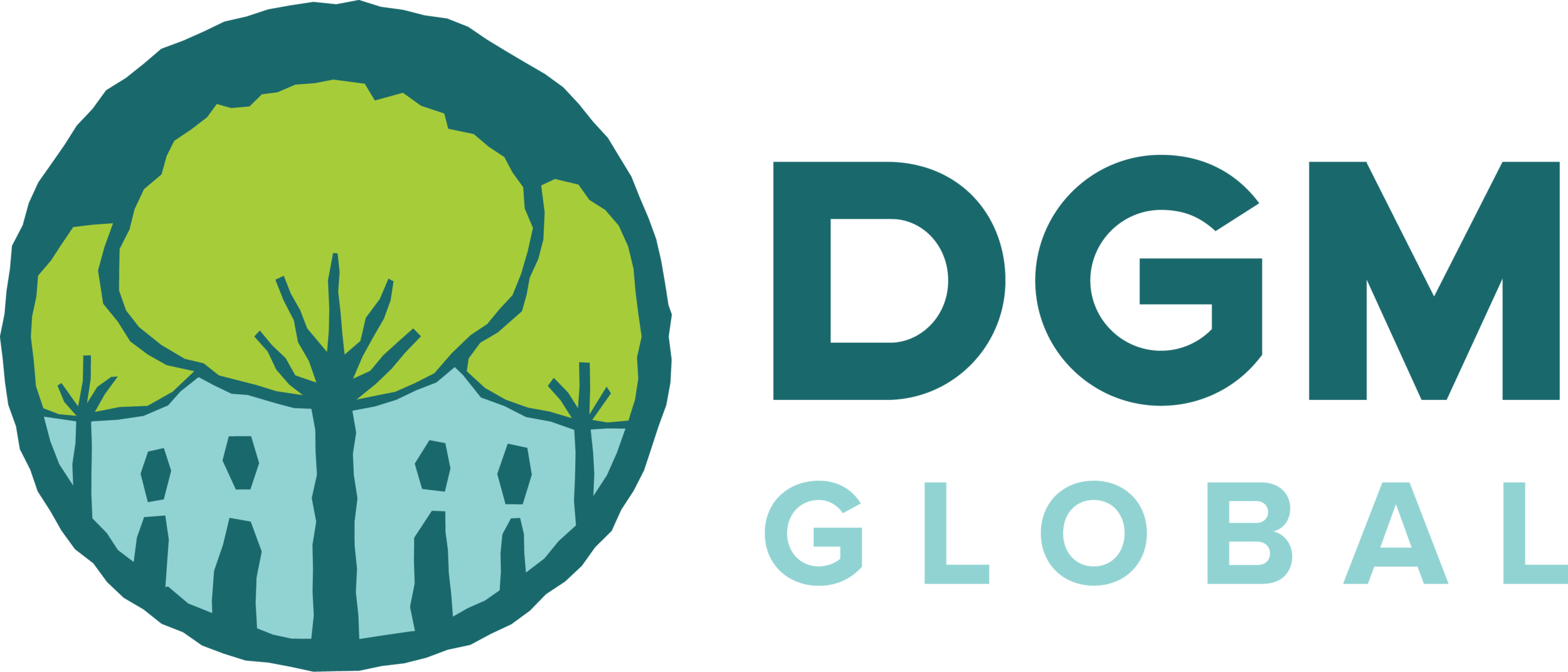Americas Exchange 2018 - Junín, Peru
DGM Global cannot guarantee the accuracy of Google translations. In case of discrepancies, the original language takes precedence.
From June 11-15, DGM Global held its second annual Americas Regional Exchange in Junín, Peru. In total, the exchange featured 25 key representatives of indigenous peoples and local communities (IPLCs) from 10 countries, including one from Indonesia, whose participation helped promote cross-regional exchange and learning. Seven of these participants (28%) were women. It was a pleasure to work with this group, among whom were experts in forestry, community forest management, lands rights and tenure, mapping, economics, food security, and natural resource management.
Exchange participants posing for a group photo with members of the Palomar native community
Beyond these participants, the Exchange included guests from WWF, Rainforest Alliance, Centro de Agricultura Alternativa do Norte de Minas (CAA/NM), and Samdhana Institute, who are implementing DGM country projects in Peru, Mexico, Brazil, and Indonesia. They joined the exchange to share an additional perspective on the context and DGM activities in their respective countries and to learn more about DGM Peru in order to enhance their own projects.
The event was also supported by the Earth Observation for Indigenous-led Land Management (EO4IM) project, which is being implemented by Conservation International with funding from NASA. The project team joined the exchange to share their knowledge around remote sensing and mapping. They worked with the exchange participants and the communities visited to demonstrate how free online tools and resources could strengthen their land and forest management efforts.
DGM Peru shared its progress to date, particularly its work on legal recognition and land titling for native communities. They noted that these legal processes are very technical and bureaucratic, but they emphasized that the DGM was making progress much more quickly than any previous efforts, which have been underway for decades. Beyond this overview, representatives of regional IPLC organizations gave specific updates on the subprojects they were implementing with DGM Peru funding. They emphasized their close coordination with the beneficiary communities of their subprojects to avoid misunderstandings and disruptions in the future and reported that the communities have been very engaged in these processes.
The exchange featured additional presentations from each of the DGM countries represented, as well as the Forest Carbon Partnership Facility (FCPF), the Abya Yala Indigenous Forum, and the Amerindian Peoples Association of Guyana. Each of these presentations highlighted the importance of close collaboration with communities and ensuring active community engagement in any interventions tied to forests or land tenure.
On June 13-14, exchange participants visited three native communities to learn firsthand how these communities manage their forests and natural resources sustainably and how they have strengthened themselves with the support of DGM Peru. For the first time at a DGM exchange, all of the communities visited were actively involved in the implementation of DGM subprojects.
On the first day of field visits, participants visited the Ashaninka native community of Pampa Michi. This community is represented by the Regional Association of Indigenous Peoples of Selva Central (ARPI-SC) and nationally by the Interethnic Association for the Development of the Peruvian Rainforest (AIDESEP), which is one of the two organizations that make up the DGM Peru National Steering Committee (NSC). Pampa Michi’s economy is dependent on tourism, through which the community members share their culture, sell their crafts, and more. With support from DGM Peru and ARPI-SC, Pampa Michi is strengthening its capacity for tourism by constructing a community house, an animal breeding farm, and a community tourism center.
Leaders from the Pampa Michi native community and ARPI-SC explaining the subproject they are implementing with support from DGM Peru
The next day, participants visited two more Ashaninka communities receiving support through DGM Peru: Chontakiari and Palomar. Both communities are represented by Central Ashaninka of Rio Tambo (CART), which is represented nationally by the Confederation of Amazonian Nationalities of Peru (CONAP), which is the other organization on DGM Peru’s National Steering Committee. These communities were more remote, requiring a caravan of a dozen pickup trucks and a ferry ride across the Perené River, but the participants received a warm welcome when they arrived at each community. Chontakiari is seeking legal recognition as a community with support from DGM Peru. They explained that all the requirements for recognition had now been met and they would soon hold a recognition ceremony. Palomar has already achieved this legal recognition, but they don’t yet have titles for their lands. DGM Peru, CONAP, and CART are supporting them with this effort. During this field visit, the EO4IM team also had an opportunity to sit down with the Palomar community to review maps showing deforestation in the region and discuss opportunities for strengthened land management through remote sensing and earth observation data. The community members expressed great interest in the maps, and with continued support from CART and CONAP, they may have opportunities to build this capacity going forward.
Participants boarding a ferry to cross the Perené River and visit the native communities of Chontakiari and Palomar
Overall, the Americas Exchange participants found the experience very beneficial, with over 90% of participants reporting a greater understanding of the DGM at the global level and in Peru, legal recognition and land titling processes in Peru, and the use of earth observation data and remote sensing. Over 60% also reported a greater understanding of community forest management and policy engagement opportunities related to indigenous peoples, forests, and climate. In general, the participants most appreciated the opportunity to share experiences with their fellow indigenous peoples and local communities from other countries.
